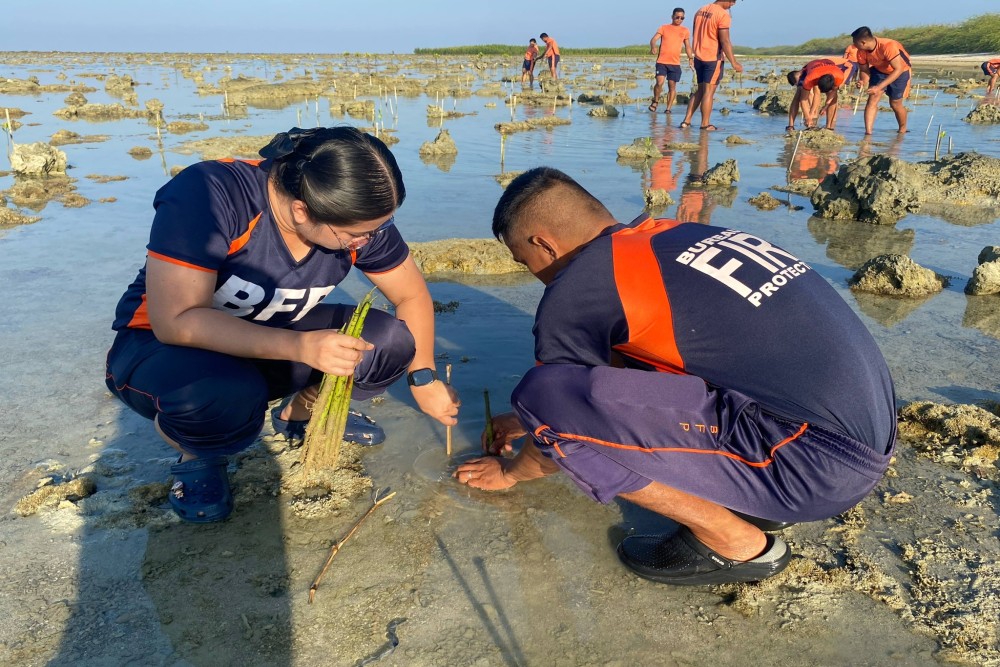VIGAN CITY – The Philippine Coast Guard (PCG) initiated the planting of 300 mangrove propagules on Monday at Barangay Surngit, San Juan town in Ilocos Sur to boost typhoon resilience in the coastal area.
The activity was conducted in celebration of the 27th anniversary of the PCG Marine Environmental Protection Command, in collaboration with the Marine Environmental Protection Enforcement and Response Unit (MEPERU), the Maritime Safety Service Unit (MSSU), and the Bureau of Fire Protection (BFP).
Lieutenant Junior Grade Christopher Busilan, station commander of Coast Guard Station Ilocos Sur, stated that mangroves are useful in battling the hazards caused by the increasingly alarming problem of climate change, such as typhoons.
Busilan explained, “Mangroves serve as our first line of defense against large waves, especially during strong typhoons, and they also help reduce soil erosion by holding the sand in place, which is crucial for protecting coastal communities.”
“It was planned in the first quarter of 2025 that we will conduct this regularly every quarter when we had our first mangrove planting on February 6, wherein we realized how important and beneficial this activity is,” Busilan said.
He said, “Initially, as I visited our coastal areas, I saw the need to plant mangroves in the areas, so this pushed me to initiate this project.”
Safeguarding marine ecosystems
He said that apart from that, this activity aimed to carry on with their commitment to marine environmental protection and sustainable coastal development.
According to studies, aside from helping mitigate climate change, mangroves also help reduce extreme heat in coastal communities, and they provide vital breeding grounds for marine life.
In addition, the PCG intends to promote environmental stewardship within local communities, considering the deteriorating global climate conditions with the continuation of this project.
In natural coastal environments, seedlings typically fall and grow on their own, but in cases that they do not land properly and take root in the seabed, they will not survive.
“We can plant them near the place where they were found; that way, we contribute directly to the effort. As long as the planted area is reached by seawater, there’s a good chance those propagules will survive,” he said.
To help the public determine propagules, he stated that these are long and shaped like sticks, roughly three-fourths the length of a ruler—around six to nine inches.
They are green in color, with one end pointed, and if they have been on the shoreline for a while, the roots might even be starting to form.
Monitoring and maintenance
That is why proper planting is still necessary, along with regular monitoring.
In some cases, if the seedlings aren’t protected, strong waves can wash them away.
“So to prevent this, we installed wooden barriers to shield them from the waves,” Busilan said.
According to him, this has become part of their daily coastal security and safety patrols, ensuring that the planted areas are regularly checked and maintained.
The area that needs to be planted with mangroves is vast, so they plan to regularly and consistently collect propagules to eventually cover the entire area that requires mangrove restoration.
Busilan said, “We hope everyone continues to support advocacies like this one because these initiatives don’t need to come solely from us—actually, the Coast Guard can take the lead in organizing activities like these. But really, everyone can take part in efforts like this.”
PIA PHOTO


